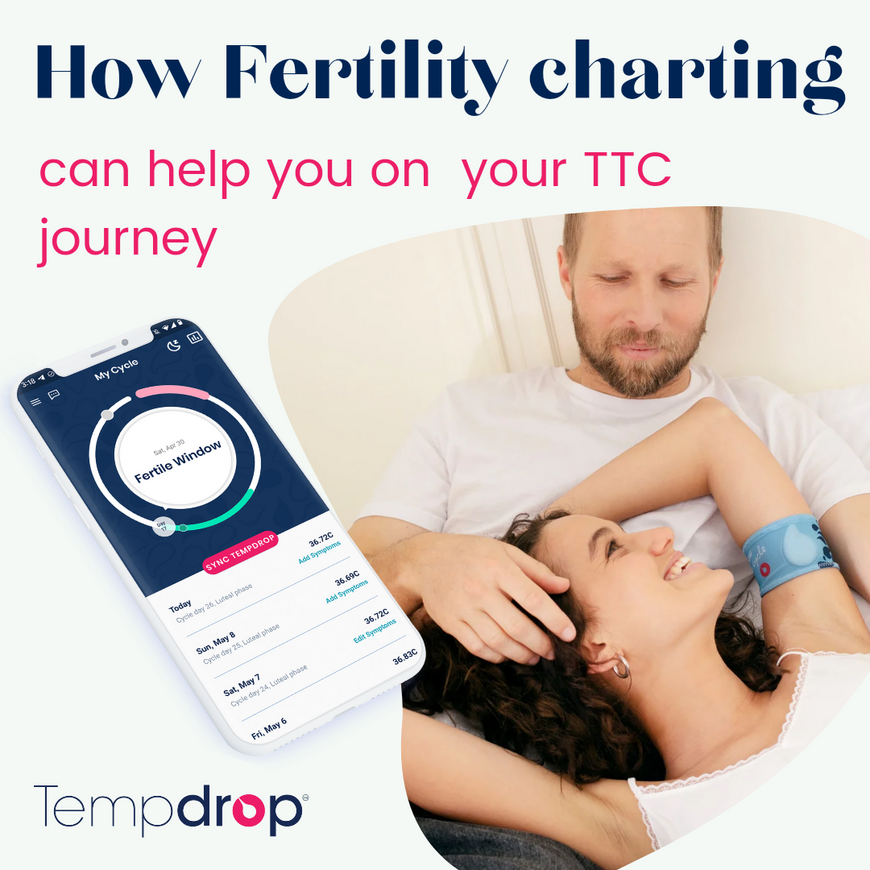By Nathalie Daudet
As a fertility awareness educator, I’ve seen time and time again, the empowerment that comes with cycle tracking. While I teach fertility awareness, largely as a natural birth control method, all of the same concepts and tools can be used to help people conceive.
In this blog post, I'll talk about how you can use your fertility chart data in the doctor's office and how it can help you, and your provider, troubleshoot conception challenges.

How can charting help if you’re trying to conceive?
We need several things for conception to occur:
- Cervical mucus is essential in keeping sperm alive and nourished (and it can keep sperm alive for up to 5 days) so that sperm can reach the egg.
- A viable egg needs to be released.
- Healthy sperm need to reach the egg.
- There needs to be enough time after ovulation and a suitable environment for the fertilized egg to implant.
By tracking your fertility biomarkers, you are identifying when ovulation takes place. Because the egg only lives for 12-24 hours, and sperm can stay alive for five days, there is only a brief window each cycle that conception can occur.
This is very different to relying on app predictions, which are not based on your live cycle data and can be incredibly inaccurate.
Charting your cycles puts you in the driver's seat of your health, and helps you pinpoint ovulation so you can time intercourse in real time.
Fertility charting and seeking treatment
Beyond helping you time conception and maximize your chances of pregnancy, fertility charting can help you troubleshoot potential fertility challenges. Charting gives you real-time health data. This information is vital when you seek treatment for fertility issues.
Your fertility chart gives you an additional layer of health data that can be used in conjunction with other tests. Some lab tests can only reveal so much, since your hormone levels change from day to day and hour to hour. Additionally, some doctors will have different lab ranges for what is considered “normal.” If you are told you have normal lab ranges but are still seeing problems in your chart, you know to dig deeper or find a new practitioner.
A chart can help your provider diagnose any potential reproductive health issues such as PCOS or a thyroid imbalance.
As a result, you can spend less time guessing and treating the root cause of the problem.
I encourage my clients to bring their actual charts to their healthcare providers. Practitioners like naturopaths, acupuncturists, or registered dieticians can read a fertility chart, and it offers a great place to start diagnosing and treating any potential issues. Ask your provider if they can take a look at your fertility chart.
Going into an appointment with as much information as possible will help you get the most out of an appointment with a provider. Do some research and have some context for your appointment. While a provider will answer your questions and conduct lab tests, you can maximize your appointment by advocating for yourself. You are in charge of your body and your reproductive health, and a provider can be a supportive ally on your healing journey.
Tracking changes with your fertility chart
As you locate the root cause of fertility challenges, you can use your chart to track the impact of any lifestyle changes, diet changes, or supplements. Experiencing the improvement of your cycle can be incredibly satisfying. Some things that might be indicators of improving fertility are:
- Regulated cervical mucus patterns
- Increased peak type mucus
- Lengthened luteal phase
- Stable basal body temperatures
- Regular ovulation
The trying to conceive (TTC) journey is isolating and can take its toll on your own mental health, and on your relationships. The practice of charting can ground you and bring clarity, helping you feel less 'in the dark'. However, I encourage you to seek support for your mental and spiritual health, just as you seek support for your physical and hormonal health. Whether online or in person, support groups can be incredibly helpful as you navigate potential fertility concerns.
In summary, fertility charting puts you in the driver's seat of your TTC journey. Your physical fertility chart contains invaluable data that can be used in conjunction with other tests and will help you accurately time conception. This is why I love charting so much - it’s incredibly versatile and useful for all reproductive life stages!
Read more about how to identify fertility signs, part one and part two. To learn more about your body, listen to this amazing podcast by Nathalie Daudet and Megan McNamara

Nathalie Daudet is a social worker and FEMM instructor based in Winnipeg, Canada. She discovered fertility awareness after searching high and low for a non-hormonal method of birth control. After learning the magic of fertility awareness and the gift of body literacy, she decided to pursue formal fertility awareness training and share the knowledge of fertility awareness with women looking for a natural birth control option. Fertility Awareness Project is the hub for Nathalie’s FEMM classes in both group and individual formats, online and in person in Winnipeg. If you love this post and would like to thank Nathalie, shop Tempdrop with Nathalie's unique referral link.

